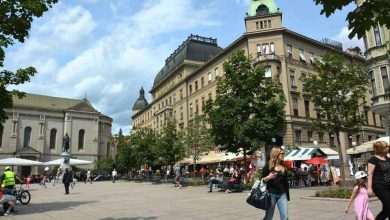A travel-weary high-born knight stood in his armour in front of the walls of a small settlement Gradec. Tired from his travels he asked a local girl for some water from the nearby spring, calling her name:’Mando, dušo, zagrabi vode’ (Manda, dear, grab me some water). The spring was given the name of that local girl, and the diocese that was to be a city one day was named Zagreb (from the word ‘grab’). That is the legend of Zagreb’s name, but not much historical evidence can support these claims. The first written records of the spring’s name date to 14th century. The spring, however, was a pivotal place in the lives of local people throughout the history of the city. At first providing water for the entire population within the settlement’s walls, soon became a melting pot of travelers, merchants, local craftsman, tax collectors and at night, as city records show, witches.
Namely, the spring has its place in the darker side of Zagreb’s history involving witch hunts. As the population grew and the town expanded, Mandusevac was used for the needs of the local market, and soon got engulfed in the ever expanding city. In the wake of modernization in the mid 19th century the spring was paved and it’s location forgotten. It was rediscovered by accident in 1986 when reconstructions took place at the ban Jelacic square. Pressured by the public, local authorities did not pave the spring back, instead constructing a fountain that became one of the city’s symbols.
1 minute read

